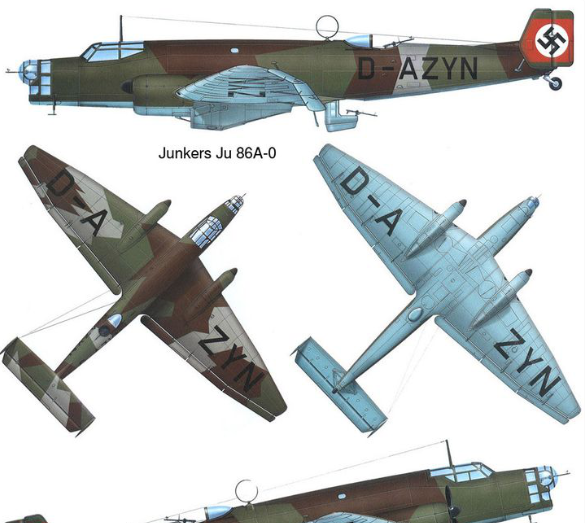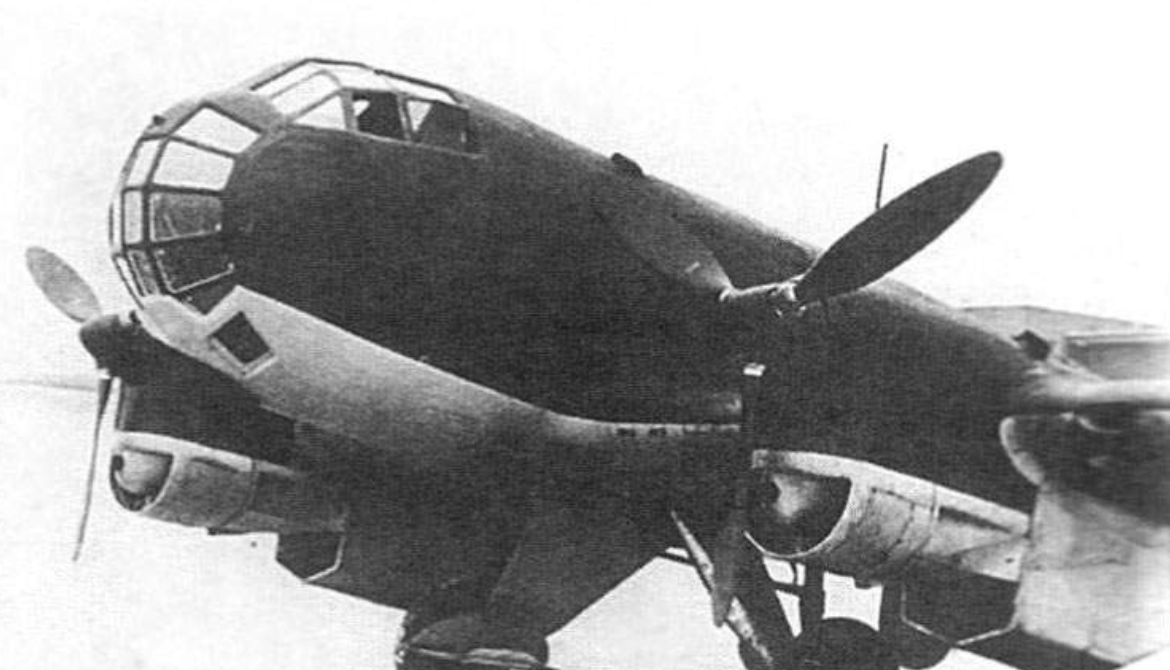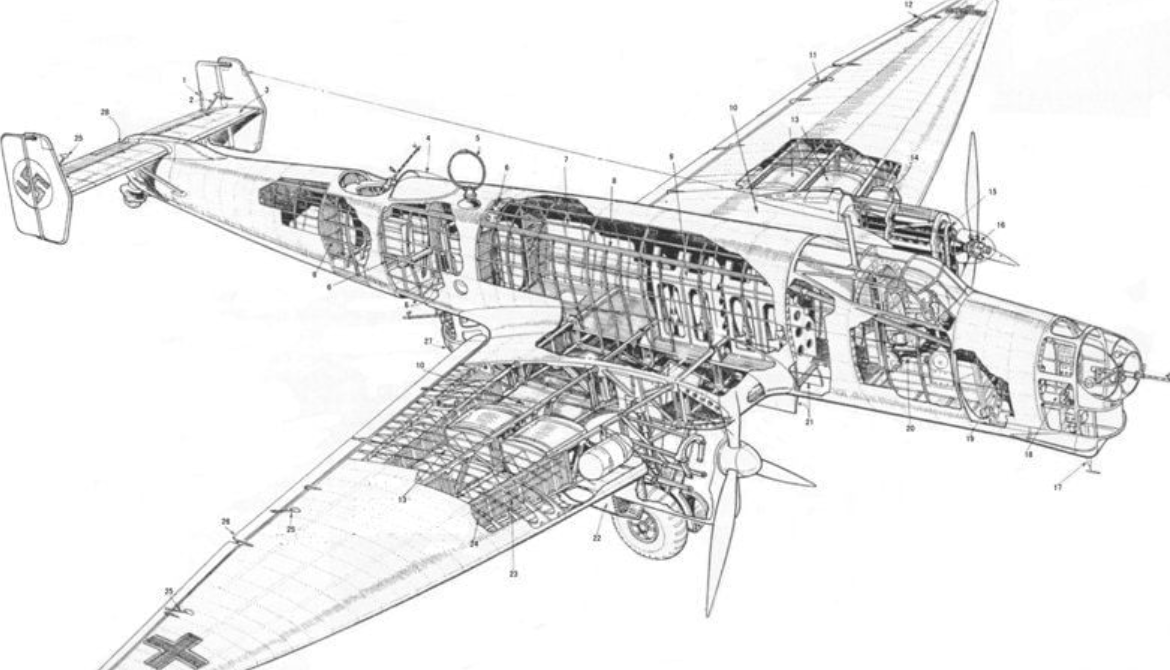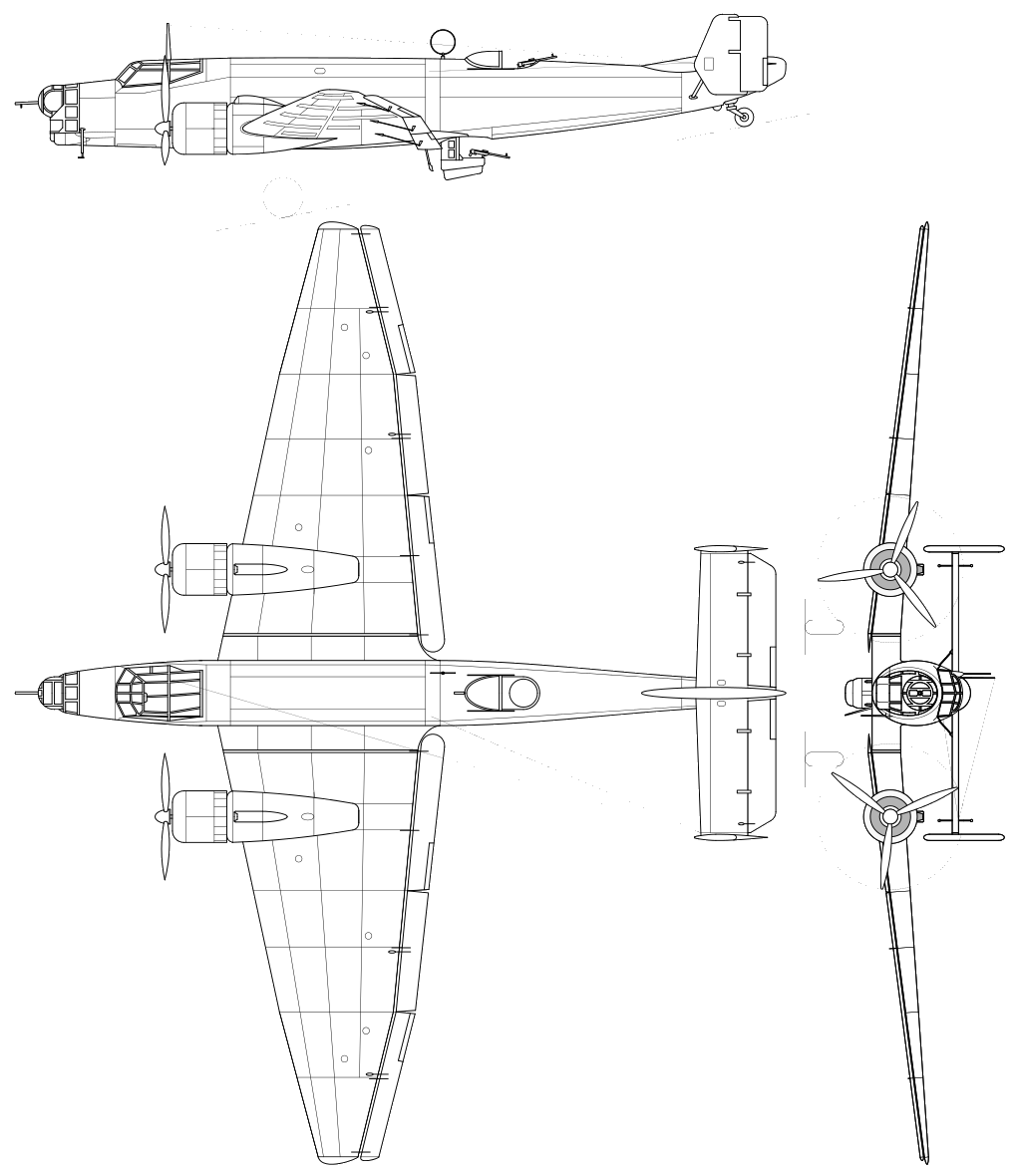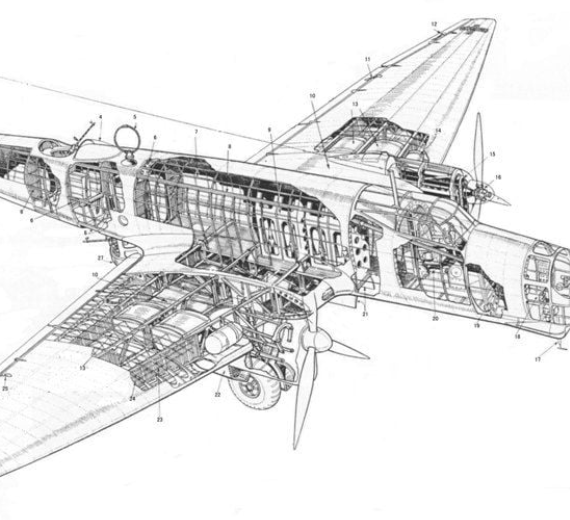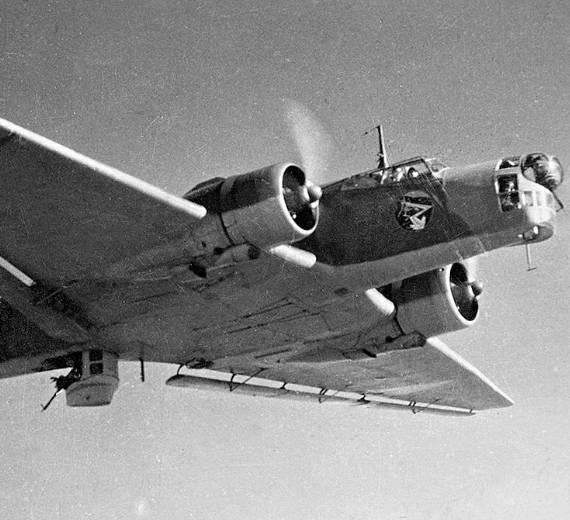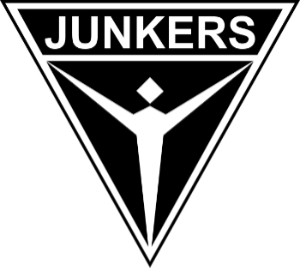.
History Junkers Flugzeug- und Motorenwerke AG JFM
Junkers Ju 86 R-1 Bomber

The Junkers Ju 86 was a German monoplane bomber and civilian airliner designed in the early 1930s, and employed by various air forces on both sides during World War II. The civilian model Ju 86B could carry ten passengers. Two were delivered to Swissair and five to Deutsche Luft Hansa. In addition a single civilian Ju 86Z was delivered to Sweden's AB Aerotransport
Design
In 1934, a specification for a modern twin-engined aircraft, capable of operating both as a high-speed airliner for the German airline Luft Hansa and as a medium bomber for the nascent Luftwaffe, was issued to both Junkers and Heinkel. Five prototypes were ordered from each company; the Junkers Ju 86 and Heinkel He 111.
Junkers' design was a low-winged twin-engined monoplane, of all-metal stressed skin construction. Unlike most of Junkers' previous designs, it discarded the typical corrugated skinning in favour of smooth metal skinning which helped to reduce drag. The craft was fitted with a narrow track retractable-main gear conventional undercarriage with a fixed tailwheel, and twin fins and rudders. It was intended to be powered by Junkers Jumo 205 diesel engines, which although heavy, gave better fuel consumption than conventional petrol engines.



Surviving aircraft

Only one Junkers Ju 86 is known to exist today. The aircraft was built in Germany and sold to Sweden in 1938. Before it was retired from Swedish service in 1958, the aircraft was used in the 1955 movie Des Teufels General. It is on permanent static display at the Swedish Air Force Museum near Linköping
0
KmCeiling
0
KmCombat RANGE
0
Km/hAircraft Speed
0
Max Crew
Photo Gallery
Junkers Flugzeug- und Motorenwerke AG JFM
Junkers Ju 86 R-1 Bomber


Junkers Flugzeug- und Motorenwerke AG JFM
Junkers Ju 86 R-1 Bomber
General Info
-
-
- Crew: 2 (pilot and radio operator)
- Length: 16.46 m (54 ft 0 in)
- Wingspan: 32 m (105 ft 0 in)
- Height: 4.08 m (13 ft 5 in)
- Wing area: 97.06 m2
-
Powerplant
-
-
- Empty weight: 6,780 kg
- Max takeoff weight: 11,530 kg
- Fuel capacity: 1,937 L
- Powerplant: 2 × Junkers Jumo 207B-3 6-cylinder liquid-cooled 2-stroke opposed-piston diesel engines, 750 kW (1,000 hp) each for take-off
-
-
- 560 kW (750 hp) at 12,000 m (40,000 ft) with GM-1 Nitrous Oxide injection
-
- Propellers: 4-bladed constant-speed propellers
-
Performance
- Maximum speed: 420 km/h (260 mph, 230 kn) at 9,000 m (30,000 ft)
-
-
- 370 km/h (230 mph; 200 kn) at 9,000 m (30,000 ft)
-
- Cruise speed: 250 km/h (160 mph, 130 kn) at 13,700 m (44,900 ft)
- Range: 1,750 km (1,090 mi, 940 nmi)
- Endurance: 7 hours 10 minutes
- Service ceiling: 14,400 m
Links to Youtube & Others
During its service with Luft Hansa, the Ju 52 had proved to be an extremely reliable passenger airplane. This positive experience contributed to its adoption by the Luftwaffe as a standard aircraft model.
Junkers Ju 86 R-1 Bomber
The Junkers Ju 86 was a German monoplane bomber and civilian airliner designed in the early 1930s,
Youtube Link
The Colombian Air Force used three Ju 52/3mde bombers equipped as floatplanes during the Colombia-Peru War in 1932–1933.

